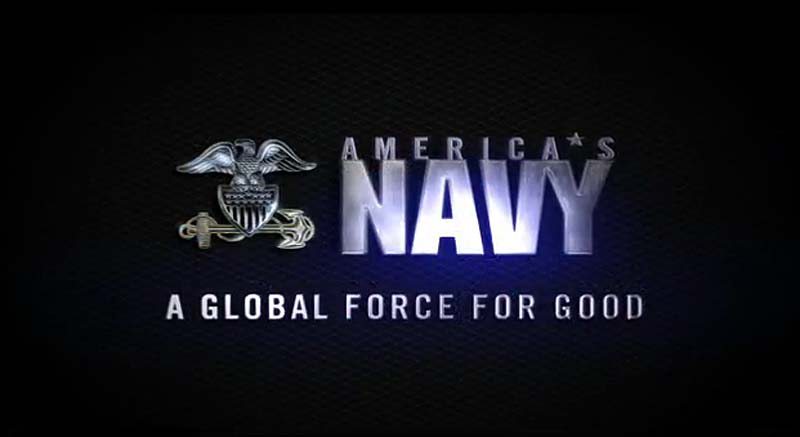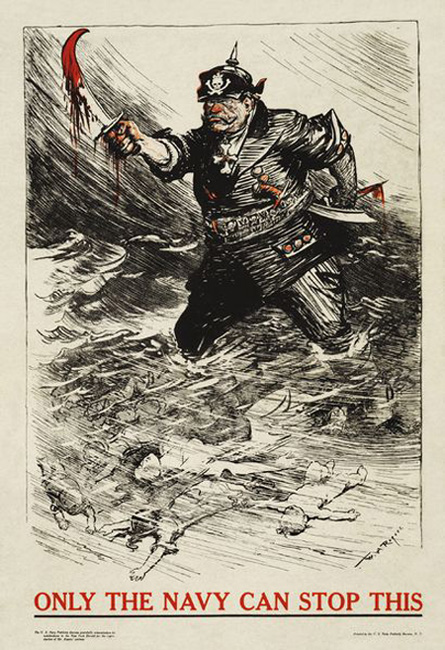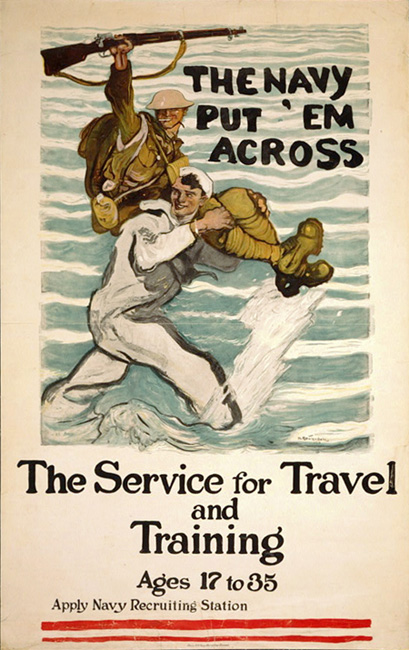

The first Navy ad I found relays much the same message, calling the Navy a "global force for good," which again assumes certain truth claims to be true, as well as giving the American ideology privilege over all others. To me, this is the purest form of propaganda. The imagery of the first text is gone, yet the message remains the same, and could even still be considered an almost veiled threat to those who would not abide by the American way. The mortise consists of the Navy emblem and the term "America's Navy," which is a less official term that is likely used to make the viewer feel more comfortable with the institution of the U.S. Navy. Aside from the mortise and anchorage, the text itself is fairly plain, leaving much to the imagination on what constitutes the "good" that the Navy is a global force for.
The Navy ads, much like any other advertisement, creates and
revolves around a regime of truth. Foucault describes a regime of truth as "a particular ground on which truth is claimed."
These truth claims are structured within the institutional apparatus of the Navy (or whatever
institution perpetuatin the regime of truth), and therefore are more easily manipulated within the
instition in order to perpetuate the power given by information. (Rose 144)

This
modern Navy advertisement produces a striking image of five ships
sailing an ocean with a red, white and blue skyline. While patriotic,
this image and the anchorage it gives are both a bit disturbing to
analyze. This advertisement is part of a set, which includes a
television commercial. It was this commercial that prompted me to do my
EAP on this topic in the first place. The Navy commercial states that it
patrols five oceans (all of them), and seven continents (also all of
them) as a "global force for good." This, to me, is a highly biased
statement towards American ideology, and in a sense, almost
self-contradictory. But I digress… The anchorage in the top right is
another interesting slogan: "Life... Liberty... and the Pursuit of all
who threaten it." This statement seems to indicate that the presence of
the United States Navy "everywhere," as the chain of commercials seems
to denote, is actually in the name of pursuing those who threaten our
life or liberty. Yet the text itself actually leaves the antagonist(s)
unnamed. Overall, the ad is blatant fear propaganda under the guise of
the protection of the life and liberty of American civilians, with
little or no regard for other ideologies or countries.
 | The next poster is far different in many ways. The "Only the Navy Can Stop This" war poster was created in 1917 and used as an enlistment tool during World War I. While this is still a form of propaganda, I feel that the use of the German soldier as the interpellative presence in the image allows for less radical interpretation of the meaning of the text. The preferred meaning is obviously that the U.S. Navy is needed in the war in order to stop bloodshed. The fact that the German is wading in water filled with bodies of women and children is, yes, condemning of all Germans. I feel that this, however, can be forgiven due to the fact that the United States was in a different time, in a war time, and also the images used were cartoonish, thus giving the overall text an embellished feel. This, as opposed to the current Navy ads which produce the myth that the Navy is a dominant force for a so-called good that remains unidentified. | The final Navy image I will analyze will be the 1918 "Navy Put 'em Across" poster. The interpellative devices in this image are the two men in the poster: an Army soldier riding on the back of a Navy sailor who, as per the anchorage, is carrying him across the ocean. To me, this is far less propaganda in the sense that it is not producing particular myths of power and ideology, nor is it addressing any enemy. While still advocating recruitment, the poster doesn't even mention a war. It simply states that the Navy is part of the United States and is used to bring Army troops (and assumedly others) to where they need to be. The target audience is more age-centered than gender-centered, although due to the fact that both of the figures in the ad are men, and keeping the time period in mind, it is likely that the target audience is still men between 17 and 35. There are regimes of truth in place, among the myths and ideologies that make up this text, however they are not |  |